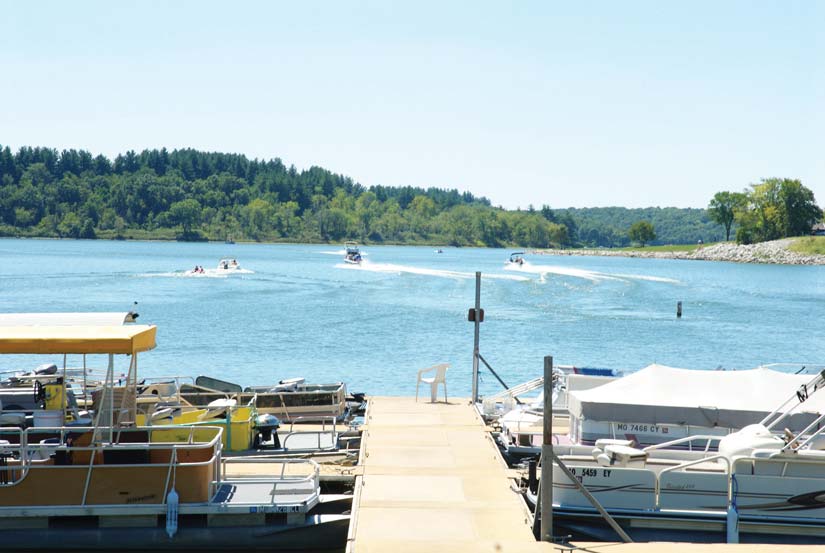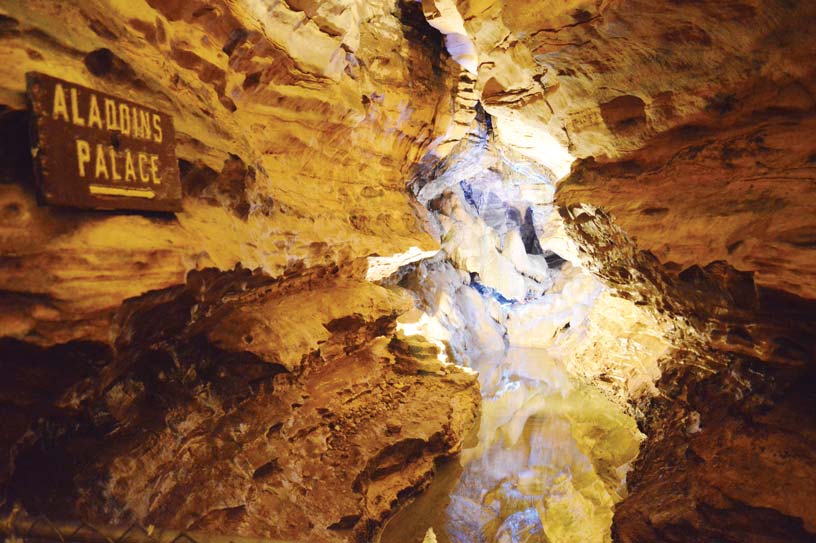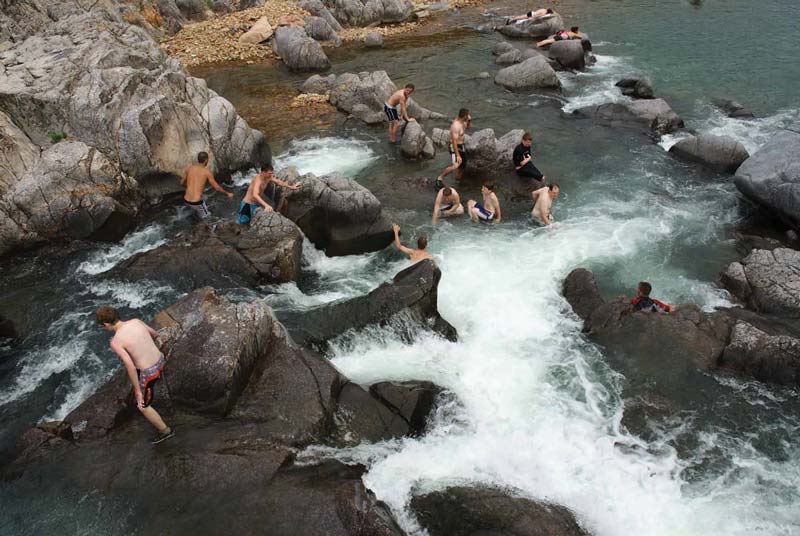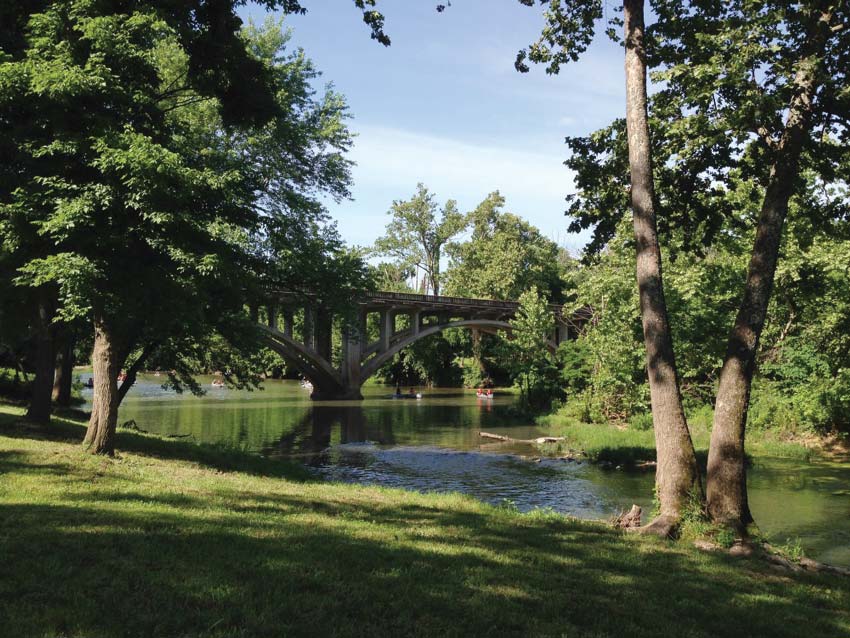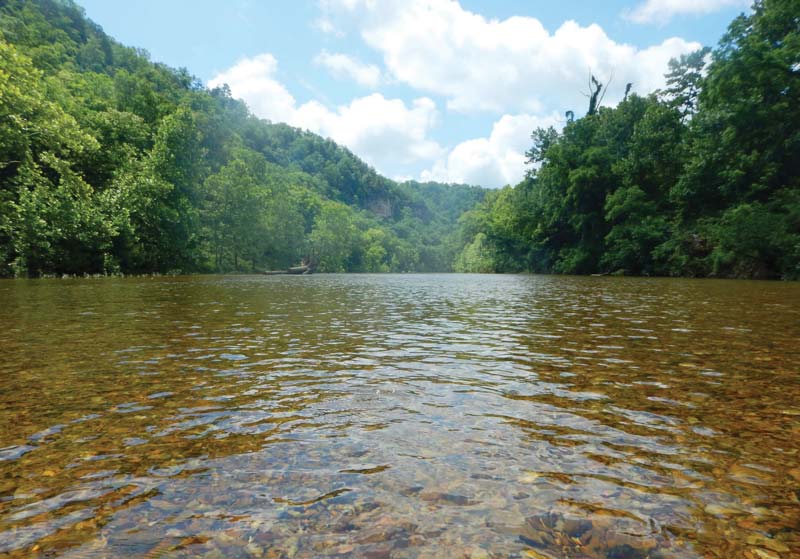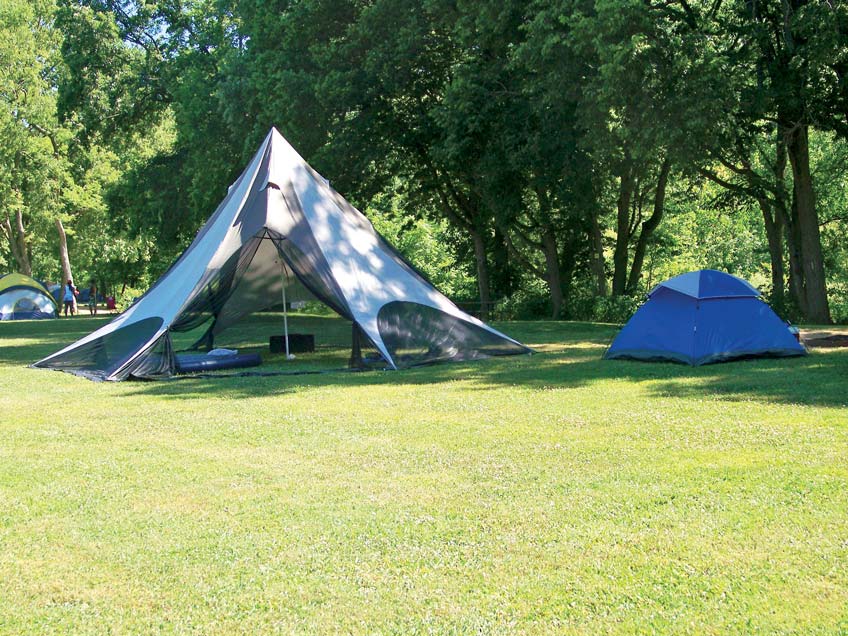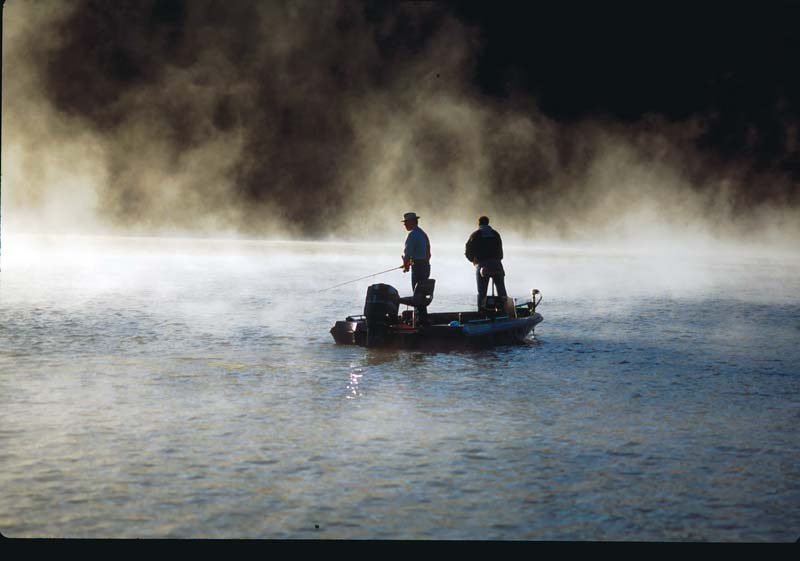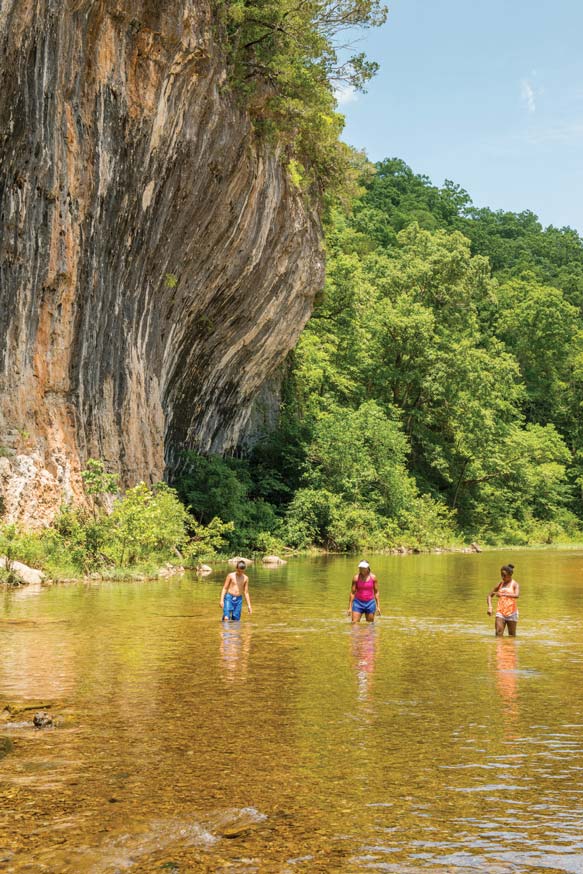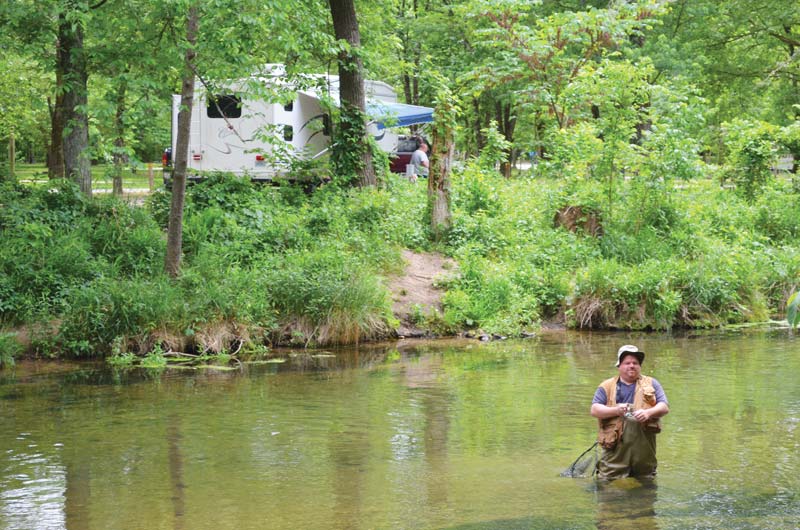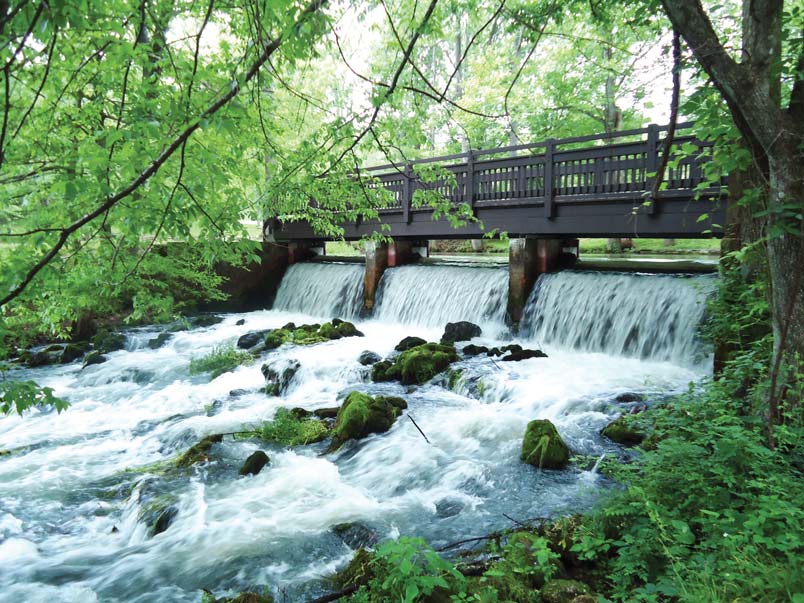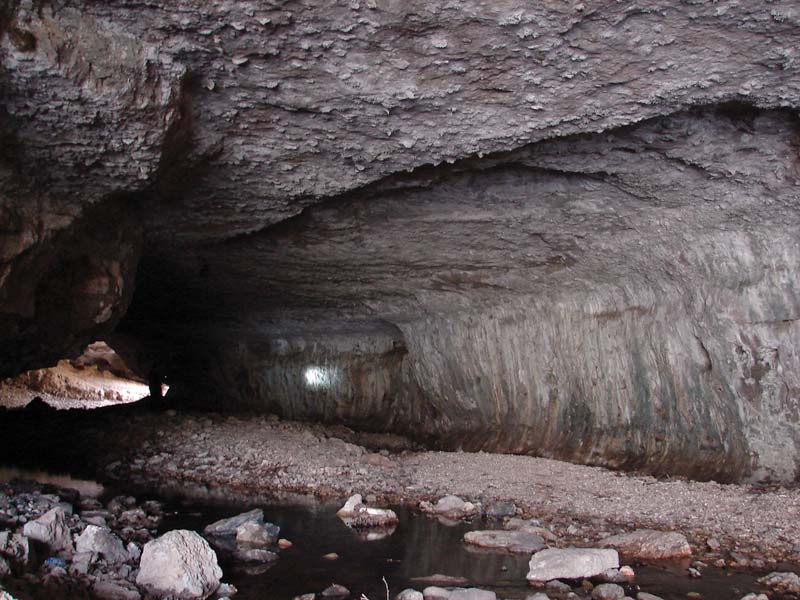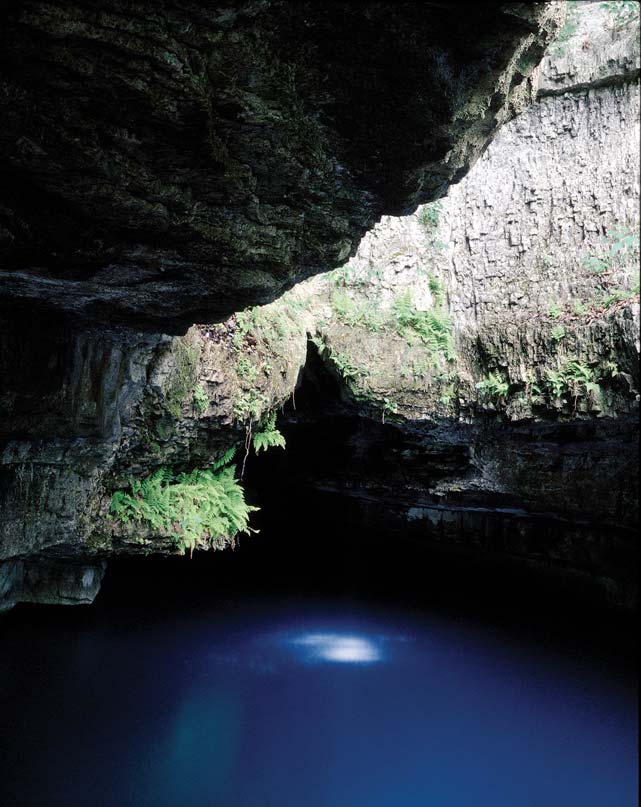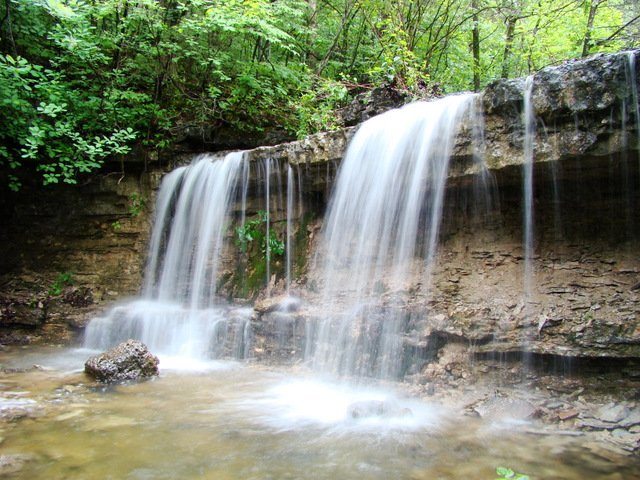If you really want to commune with nature, go camping.
Experience the great outdoors in ways that have been lost to us in modern, everyday life: sitting around a fire, staring up at the stars, and sleeping in a primitive shelter while listening to nature’s melody of rushing water and rustling leaves.
Camping doesn’t have to be uncomfortable. Modern tents oer much greater ease of use and work better than those old contraptions with bags of big metal poles. Sleeping bags are warmer and more comfortable, and other modern items such as cookstoves and LED lanterns have taken many of the frustrations out of camping excursions.
Maybe you’re not a tent camper and never will be. That’s fine. There are countless styles of recreational vehicles out there to accommodate you, from drivable motorhomes to travel trailers so small they can be pulled by compact cars. And you don’t have to buy a camper; you can rent one. Camping is meant to be relaxing, so do what you find enjoyable and make the most of it.
When you hear people talk about their favorite childhood memories, they often recall camping trips. Gathering with family and friends or going solo, campers seek to escape the hustle and bustle of everyday life. For a great camping experience, consider visiting one of these Missouri camping destinations and make some memories.
Th ousand Hills State Park
20431 Route 157, Kirksville • 660-665-6995 • Website
Northern Missouri is often overlooked when considering outdoor recreation in Missouri because much of the region is privately owned with a majority of the landscape dedicated to agriculture. But just a few miles west of Kirksville, there is a treasure trove of outdoor fun waiting to be enjoyed at Thousand Hills State Park.
With two campgrounds offering basic and electric campsites, the park is an ideal place for a fun-filled family getaway. Thousand Hills offers family campsites to accommodate parties of up to 12. It also has a special camping area for nonprofit organizations to use, available on a first-come, first-served basis. An on-site park store offers camping supplies.
“Thousand Hills is a special place for us. We meet our family from Iowa there every year because it’s halfway for all of us,” says Judi Lahr of Jefferson City. “The fishing, hiking, and storytelling are family traditions that keep us coming back. We have made lots of wonderful memories there.”
The centerpiece of Thousand Hills State Park is Forest Lake. At 573 acres, this fishing lake is large enough to allow for pleasure boating; water skiing and tubing are popular pastimes on hot summer days. A good number of pontoon boats also cruise the lake as visitors relax on the water. There is a 90-horsepower limit on boat motors, and boat rentals are available at the on-site marina. Canoes and kayaks are also popular for those looking to paddle their way around the lake. There is a beach but no lifeguards, so you swim at your own risk. Pets are allowed on the beach.
Largemouth bass, crappie, catfish, and walleye are all plentiful for those interested in fishing Forest Lake. The park offers swimming, hiking, mountain biking, and wildlife viewing. A unique feature of Thousand Hills State Park is an interpretive shelter housing 1,500-year-old petroglyphs. These ancient rock carvings are explained by a series of signs along the inside of the shelter.
Mark Twain Cave & Campground
300 Cave Hollow Road, Hannibal • 573-221-1656 or 800-527-0304 • Website
Situated on the banks of the mighty Mississippi River is one of Missouri’s most interesting and historic towns: Hannibal. Home of Mark Twain, Hannibal and its citizens were the inspiration for the author who gave the world a sense of adventure and mischief with his timeless works The Adventures of Tom Sawyer and The Adventures of Huckleberry Finn.
Tourists from around the world descend on this quaint little city to feel a connection with Twain, and few opportunities allow you to experience the world of Tom and Huck like touring the cave immortalized by their adventures.
Mark Twain Cave Campground is adjacent to the cave where Tom and Becky get lost and cross paths with Injun Joe. A stay at the campground, open from April 1 through October 31 each year, will connect you to one of the greatest American stories ever written.
“Our campground is conveniently located six minutes from downtown Hannibal, where numerous festivals are held throughout the summer and fall,” says Tessa Hosmer, assistant operations manager. “We have two caves and a winery on-site, and we have live music most weekends in the summer. We have many dierent types of campsites, so we have the perfect spot for everyone.”
With 99 campsites and amenities ranging from full hookup to basic tent camping, you’re sure to find a site that suits you. Pull in with your motor home or pitch a tent; there’s room for either. Some campsites are in the open, and others are tucked back in the shade. Laundry facilities are on-site, and there is free Wi-Fi. A small camp store has basic supplies, but you can find anything you need in town.
A trip into town to experience the Mark Twain Boyhood Home and Museum is a must. Stroll the old brick streets along the river and hop a steamboat for a ride on the river. For the adults on this adventure, Cave Hollow West Winery offers local wine with names like Mark Twain Reserve, The Jumping Frog, and Mischief.
Johnson’s Shut-Ins State Park
148 Taum Sauk Trail, Lesterville • 573-546-2450 • Website
Johnson’s Shut-Ins is a place you won’t believe until you see it. How water can form rock the way the Black River created the shut-ins is hard to fathom. You have to think back a billion years— that’s how long ago the pink granite and blue-gray rhyolites, both igneous rocks, found in the state park were formed from volcanic activity. The Black River has been shaping them ever since.
A shut-in is a deep, narrow passage in a river formed by water passing through rock that is hard to erode. At Johnson’s Shut-Ins, softer rock in the middle of the river has eroded and created a maze-like look to the flow of water through rocks shaped over hundreds of millions of years. You can swim though the rocks and ride natural slides into deep-plunge pools. It’s a truly remarkable natural phenomenon.
“My family is new to camping recently, and everyone said that we have to check out the shut-ins,” says Courtney Jeremy of Vienna, Missouri. “They were right. The swimming hole is great. The kids love it. We all enjoyed the extensive hiking trails, which—let me tell you—was great exercise for the adults. And the peacefulness of the secluded campsites was wonderful. We will be returning for years to come.”
The state park is surrounded by the St. Francois Mountains, which are comprised of some of the oldest rock in North America. Taum Sauk Mountain, Missouri’s highest point at 1,772 feet, looms over the region. You know a place is special when it has these two distinct designations. Inside the park is a 180- acre natural area. Along with the amazing rock formations in the shut-ins and breathtaking mountain views, you’ll find expansive forest, glades, and fens.
In December 2005, the park was destroyed when a dam broke on a mountaintop reservoir, and 1.3 billion gallons of water rushing down Prot Mountain wiped out everything in its path. The campground was empty, so no lives were lost. The new campground offers every modern amenity for a tent or RV camper. If you don’t have space to park your RV camper at home, you can rent a unit at st albert rv storage.
Hidden Valley Outfitt ers
27101 Marigold Drive, Lebanon •417-533-5628 • Website
If location is everything, Hidden Valley Outfitters hit a homerun. Situated on the Niangua River next to the Route 64 bridge and across the road from Bennett Spring State Park, Hidden Valley is in the heart of trophy trout fishing and floating. You can set up a riverside camp and walk just a few steps to cast your lure.
Hidden Valley Outfitters offers a lot of camping options and all the amenities you could want. Whether you are in a tent or a large travel trailer, you’ll find an ideal campsite here. Every campsite includes a picnic table, fire ring, lantern post, and access to modern bathrooms. There are 52 full-hookup sites with 40-foot concrete pads, electric, water, and septic. Most of these are drive-through. There are 32 campsites with electric without the concrete pads and many more campsites without electric.
“What makes Hidden Valley stand out for me is the ability to walk right down to the river and fish one of the best stretches of trout water in the state without ever being out of eyesight of my tent,” says Columbia resident Scott Gerlt, past president of Mid-Missouri Trout Unlimited. “It’s a very clean, family-friendly campground in a perfect location for experiencing the best of the Niangua River.”
The Niangua is one of Missouri’s most heavily floated rivers. When you couple the spectacular scenery with the outstanding fishing, it’s easy to understand why. Another advantage is the ease of finding a canoe livery—Hidden Valley Outfitters will handle your float from any of three private access points on the Niangua River.
Ozark National Scenic Riverways
404 Watercress Road, Van Buren • 573-323-4236 • Website
Emerging from your tent mere feet from rippling water as an early morning mist rises around you is a magical camping experience. Few places oer such an opportunity for an escape as a gravel bar alongside a river.
The Current and Jacks Fork Rivers combine to form the Ozark National Scenic Riverways, which has been a national park since 1964. Encompassing more than 80,000 acres of public land stretching 134 miles along sections of the two rivers, this land is your land. Load up your canoe or rent one from a local livery, and hit the river for a multi-day wilderness camping experience by water. Paddle all day, then pick a spot that looks alluring and set up your tent. It’s that simple. Freedom at its finest.
“Camping on a gravel bar is my favorite thing to do in this world,” says outdoor writer Bobby Whitehead of Chesterfield. “Watching the mist rise from the river in the morning, with no other sound besides the flowing water, while enjoying a cup of coffee is heavenly. For me, the best campground is one without campsites, and that’s what the Ozark National Scenic Riverways offers.”
You must pack light for gravel-bar camping. You don’t need those cots; pack sleeping pads instead. Leave the family-sized tent at home and squeeze into a smaller one. Bring a single-burner stove, and don’t overdo it on perishable foods. Pack small, and you’ll have a more enjoyable paddling experience. If you flip your canoe, you’ll have an easier time gathering your belongings. But whatever you do, don’t forget your fishing equipment.
If gravel-bar camping isn’t in the cards for you, but you’d still like to experience this magnificent national park, there are many campgrounds offering a range of amenities you can reach by road.
Front Country Campgrounds has the most amenities, and you can reserve some campsites. Alley Spring, Big Spring, Pulltite, and Round Spring campgrounds all have some sites with electric and water hookups, and there are modern bathrooms with showers. Powder Mill and Two Rivers have shower houses and restrooms but no electric. Akers has four group sites with no amenities.
Backcountry campgrounds may have some basic amenities such as restrooms, tables, fire grills, and lantern posts, but campsites can’t be reserved. These campgrounds include Cedar Grove, Sinking Creek, Bay Creek, Blue Spring, Rymers, Shawnee Creek, Log Yard, Pin Oak, Big Tree, Cedar Spring, Grubbs, and Gooseneck.
Primitive campsites have no amenities and offer no reservations. There are 24 of these campsites throughout the park. Consult a map for the locations.
Huzzah Valley Resort
970 East Route 8, Steelville • 573-786-8412 • Website
Huzzah Valley Resort is a fine place to take a family camping, but it’s even better for a group that wants to cut loose and kick back for a weekend of fun in the sun. Floating the Huzzah River is the prime draw to this location, and people come in droves to experience the cool, clear water of the Huzzah.
“Floating is a time-honored tradition in our family, and the folks at Huzzah Valley Resort do it right,” says Stephanie Hughes of Berger.
Located between Steelville and Potosi on Route 8, Huzzah Valley Resort is on the north side of Mark Twain National Forest. The Ozark forest landscape is spectacular, and paddling, hiking, and fishing opportunities abound.
Many of the campsites for both tents and RVs are situated right along the resort’s 2½ miles of river. You’ll enjoy the peaceful sound of the Huzzah flowing by as you relax in bed or by a campfire. The campsites are spacious and allow for parties of up to 10 per site. Full-hookup and electric sites are available. Each campsite features a picnic table, fire ring, and grill, but you’ll need to supply the charcoal. Modern bathrooms are available, but a five-minute shower will cost you 50 cents.
“A great atmosphere and a fun and accessible campground are just a few of the great things that we experience year after year,” Stephanie says.
A few special camping sections exist. If you are looking for a little extra solitude, there are wooded tent sites o ffering shady seclusion. Those who want to let loose late into the night will need to plant their camp in the Zoo. You must be 18 years old to camp in the Zoo, and a strict policy about not crossing from the Zoo to the family camping area is enforced.
If you had a little too much fun the day before to wake up early and make breakfast, don’t worry. Huzzah Bob’s Dining Lodge serves a bu et breakfast on Saturday and Sunday.
La ke of the Ozar ks State Park
La ke of the Ozark s State Park 403 Route 134, Kaiser • 573-348-2694 • Website
Lake of the Ozarks is one of the top tourist destinations in the Midwest. While many come to experience the lavish lakeside hotels and condominium complexes, there are also those who make their way to “the Lake” for outdoor recreation. There is no better place to accomplish this than at Missouri’s most visited state park, Lake of the Ozarks State Park.
Offering a choice of basic and electric campsites, Lake of the Ozarks State Park is a great place to get away in either a tent or an RV. Family campsites are available for groups of up to 12, and if you need even more room, there are four organized group camps perfect for large gatherings. These large campsites make Lake of the Ozarks State Park a great location for a family reunion.
“Being on the waterfront and having our entire campsite shaded is what we really enjoy,” says regular visitor Dale LaBoube of Hermann. “The hiking trails, fishing opportunities, and wonderful views keep us coming back to the Ozarks.”
Not everyone is excited to sleep in a tent and may shy away from the idea of camping if they don’t have access to an RV. These folks can meet in the middle. Lake of the Ozarks State Park offers two options for rustic, yet enclosed-structure, camping experiences.
One option is to rent a yurt. A yurt is basically half cabin and half tent. It’s a circular structure with a fabric cover and a wooden frame. Yurts are more structurally sound and weather resistant than tents and have a wood floor and a door. Three large windows and a skylight allow light while offering a view and ventilation.
If you’re still not sold on the soft-sided yurt, the park offers eight rustic log cabins. These cabins have more modern amenities than a tent or yurt. Each cabin has a table and chairs, wood-burning stove, electricity, ceiling fan, air conditioning, small refrigerator, and microwave. There is no running water or indoor plumbing, and you still need to bring your own camping gear.
Table Roc k Lak e State Park
5272 Missouri Route 165, Branson • 417-334-4704 • Website
Nestled on the shore of 43,100-acre Table Rock Lake, this state park sits in one of the most beautiful locations in Missouri. Table Rock Lake State Park is located just outside of Branson, one of the leading tourist destinations in America, but it feels like you are a world away from the neon lights of the downtown strip.
Watersports are the main draw of Table Rock Lake. Once you visit, it’s easy to understand why. The crystal clear lake is special because the approximately 750 miles of natural shoreline is public property protected from expansive development. So no matter where you are on the lake, you’re surrounded by natural scenery. There are countless coves and deep pockets where boaters can anchor and enjoy a relaxing day of swimming and grilling in solitude. In most areas, it’s perfectly legal to pull over on the shore and set up a picnic under a shade tree, then stretch a hammock for a nap. If you don’t have your own boat, State Park Marina has plenty of options available for rent.
The lake is also an incredible fishing destination, yielding up largemouth and smallmouth bass, crappie, and tailwater trout.
“Being able to camp so close to the water is one of the greatest things that we love about Table Rock,” says Coleen DeHaven of Westphalia. “Also, the new premium yurt is a great addition to this already very special campground. Being able to travel right into Branson for the entertainment is an added bonus for us.”
Table Rock State Park has two campgrounds that o er all sorts of campsites from primitive to full hookup. The park also has family campsites for larger groups. A unique way to camp at Table Rock is to rent a houseboat. Five Star Houseboat Vacations off ers luxury houseboats with all the amenities you need to enjoy an on-the-water camping experience.
Echo Bluff State Park
35244 Echo Bluff Drive, Eminence • 573-751-5211 • Website
Missouri’s 53rd state park, Echo Bluff, officially opened in 2016. Missouri’s state parks and 34 historic sites offer many unique, inviting properties, but Echo Bluff is truly exceptional.
Echo Bluff is about 25 miles south of Salem and 15 miles north of Eminence. Sinking Creek flows through the park and is the sculptor of the namesake bluff. The creek’s confluence with the Current River is a little ways beyond the park border. Echo Bluff is surrounded by public land, including conservation areas, national forest, and the Ozark National Scenic Riverways.
“The Current River is a world-class place to float, but for too long, there was not a local campground offering all the amenities one would expect to find in a state-of-the-art, modern campground,” says Nathan McLeod, who is a regular visitor to the area and from Columbia.
At 430 acres, Echo Blu is a year-round destination. The campground offers a mix of full-hookup sites and walk-in tent sites. It’s a bit wide open at present, but trees have been replanted to someday shade the campsites.
The area offers endless opportunities for outdoor recreation. Take a float on the Current or Jacks Fork Rivers. Land a trout at Montauk State Park. Soak and swim in the pool below Rocky Falls. Take a horseback ride through forested wilderness. Tour Alley Spring Mill, explore Round Spring Cave, or view wild elk at Peck Ranch Conservation Area.
4 Trout Parks
Missouri is home to four special places known as trout parks—Maramec Spring Park and three state parks, Bennett Spring, Montauk, and Roaring River. They’re all home to heavily stocked sections of trout-fishing rivers, and all four parks oer exceptional campgrounds.
“All four of Missouri’s trout parks are special places to visit and camp,” says Bill Cooper, host of the Wild at Heart radio show in Rolla. “It’s sort of hard to separate them and pick a favorite, because they are all similar, yet each has a distinct difference that makes it unique.”
All the parks are heavily stocked with trout. The “stockers” are hatchery raised and released into the waters with the expectation anglers are going to keep their catch. Some trout elude anglers and make it to places where they can hide and grow larger. Both Roaring River and Montauk have catch-and-release areas, so the possibility of catching a lunker trout is realistic. For the most part, anglers visiting the parks are there to catch and keep, then clean and cook.
Montauk State Park
345 County Road 6670, Salem • 573-548-2201 • Website
Montauk is the most rustic trout park. Encompassing the headwaters of the Current River, the park boasts a river that is natural and wild. Montauk has tent sites and full hookups and can accommodate large RVs. Amenities include a full-service dining hall, Wi-Fi, and other conveniences.
Maramec Spring Park
21880 Maramec Spring Drive, St. James • 573-265-7387 • Website
Privately owned Maramec Spring Park is home to the fifth-largest spring in the state and highlights the history of the region’s connection to the Maramec Iron Works. The campground is equally inviting. Campsites are adjacent to the Meramec River. All have a fire pit and a picnic table; some have electric hookups. Showers and restrooms are available.
Bennett Spring State Park
26250 Route 64A, Lebanon • 417-532-4338 • Website
Bennett Spring is situated in a beautiful, lush valley. The spring branch runs wide, providing ample room for anglers. There are basic tent sites along with full-hookup sites, with room for even the largest recreational vehicles. A full-service dining hall is available, as are other amenities, including Wi-Fi.
Roaring River State Par k
12716 Farm Road 2239, Cassville • 417-847-2539 • Website
Roaring River State Park has a rich history of projects completed in the 1930s by the Civilian Conservation Corps. The river is slight but pristine, and anglers must remain on the shore. Campers will find basic tent sites and full hookups, RV space included. A full-service dining hall, Wi-Fi, and other niceties make your stay a comfortable one.
What to Bring When Tent Camping
Tent
Tents come in many shapes, sizes, and strengths. For most camping experiences in Missouri, a three-season family tent is what you need. A good rule of thumb for comfortable camping is to double the occupancy rating of the stated tent size. For example, a four-person tent will comfortably sleep two people, and an eight-person tent will comfortably sleep four people. This gives you room for your luggage and supplies.
Bedding
Sleeping bags also come in many shapes, sizes, and temperature ratings. Because you will likely be driving to your campsite, size and weight shouldn’t be your main concern. Focus on comfort. You want to sleep well while camping, and a thick, roomy, warm open-front sleeping bag will be more comfortable than a constricting mummy bag. For added comfort, consider an air mattress or a sleeping pad. Hey, you’re not trying to impress anyone, and a rock or stick jabbing you in the back makes for a long night.
Cooking
The first step in cooking while camping is proper food storage. A lot of modern coolers will keep food cold and safe for days. Store your cooler in the shade to make ice last longer. Camp stoves that run on propane or white gas make cooking a breeze. Charcoal grills, Dutch ovens, and campfire cooking are more traditional but require more work. Prepare what food you can at home. Measure out portions and bring only what is needed. Be sure to use strong, sealable boxes and bags. Most modern campgrounds provide safe drinking water. If you will be primitive camping, you’ll need to bring bottled water. Other key cooking items include utensils, plates, bowls, cups, pots and pans, spatula, cutting knife, paper towels, aluminum foil, can opener, wash tub, rags, and dish soap. Click here for recipes of campfire food you can cook in foil pouches.
Campfires
Campfires are a focal point of a fun camping experience. Most campgrounds have a fire pit at each campsite. Buy local firewood. Make sure it is seasoned and dry. Because of invasive insect species, it is important not to haul firewood with you. To avoid frustration, use a fire starter. You also need matches or a lighter, lighter fluid, newspaper and kindling (small, thin strips of wood), and a hatchet or ax.
Lighting
Lanterns have come a long way from the old days. Today, an LED lantern works on batteries with a flick of switch. Propane and gas lanterns are still great, too, but require more fuel, work, and expense. Lanterns come in many sizes and weights. Consider how much light you need. Flashlights are important tools for camping. One of the best types of camping flashlights is a headlamp; these leave your hands free for chopping wood or flipping burgers.
A Word on Bears
Across the Ozarks, black bears are growing in number. This incredible conservation story should make Missourians proud. Black bears are incredible creatures that belong on our landscape. But, as bear populations expand, humans must take precautions in bear country to ensure the safety of those venturing outdoors while still doing our part to ensure the restoration and survival of this native Missouri species.
If you are planning to camp in the Missouri Ozarks this year, you’re headed to bear country. With only an estimated 300 to 350 bears in the state, your chances of coming in contact with one are very slim. However, you still need to be prepared and take precautions.
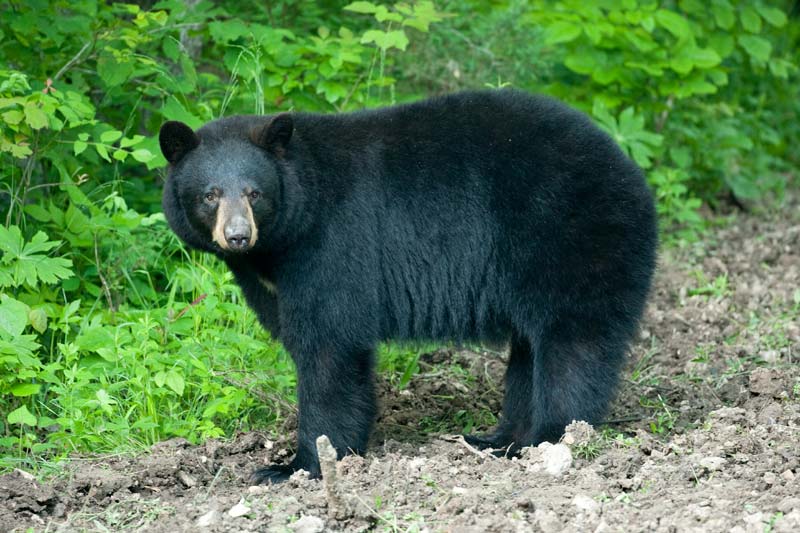
Here are 10 rules for camping in bear country:
- Never feed bears.
- Keep a clean camp.
- Wash utensils after cooking.
- Start food preparation at home.
- Store food in airtight containers.
- Don’t cook or eat in tents.
- Keep garbage sealed.
- Treat scented items like food.
- Never approach bears.
- Keep dogs leashed.
Related Posts
7 Missouri Waterfalls
A haven for gorgeous scenery, the Ozarks is brimming with stunning waterfalls. April and May are great months to enjoy our waterfalls, as water flow is at its peak from spring showers.
Revitalizing Missouri Downtowns
Here’s how Missourians are working together to revitalize downtowns across the state.
Pickleball Is Taking Missouri By Storm
It took about a decade for pickleball to sweep Missouri. With more than 100 locations developed since 2010, Missouri might just have the fastest-growing pickleball community in the country.

